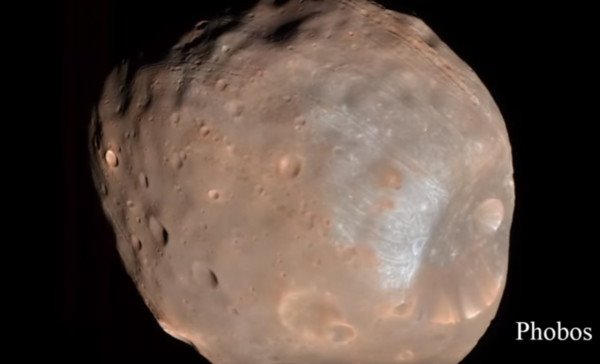This is Scientific American — 60-Second Science. I’m Lee Billings.
Mars is a planet of outsized splendor. Despite being only half as big and a tenth as heavy as Earth, it bears the solar system’s tallest mountain, longest canyon and largest crater. At 22 and 12 kilometers wide, however, its inner moon Phobos and outer moon Deimos are figurative small potatoes. Scientists suspect both formed much as Earth’s single large moon did, from a massive debris disk ejected into orbit by a giant impact eons ago. But if Mars’s moons formed like Earth’s, why are they so very much smaller?
The answer may be that they did not form alone. New simulations from Pascal Rosenblatt of the Royal Observatory of Belgium and colleagues show how the debris disk from a giant impact on Mars could have generated additional moons a few hundreds of kilometers in size. After forming in the dense inner regions of the disk, those larger moons would have stirred the disk’s sparser outer reaches, allowing smaller companions like Phobos and Deimos to coalesce from the ripples. The study appears in the journal Nature Geoscience.

In this scenario, the reason we only see Phobos and Deimos today is that the bigger moons were destroyed a few million years after their formation. Their low, fast orbits outpaced Mars’s rotation, creating a tidal pull that sent them spiraling down to crash into the planet (Earth’s moon, by contrast, orbited slower than our planet’s rotation, allowing it to spiral outward and survive). Future investigations could test the new hypothesis by looking for clusters of Martian craters produced by the infalling moons, but in the meantime, proof that Mars can kill its companions is right before our eyes: The orbit of Deimos is stable, but Phobos is in a death spiral, losing two centimeters of altitude per year to Mars’s tidal pull. It will plunge into the planet in 20 million to 40 million years, leaving lonely, far-out Deimos as the last vestige of what may have been a once-mighty system of Martian moons.
For Scientific American — 60-Second Science Science. I'm Lee Billings.












